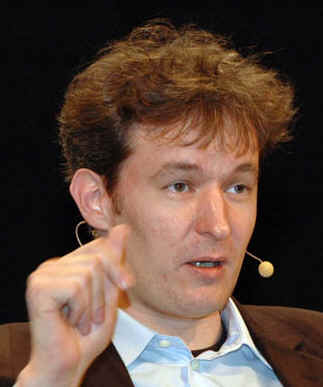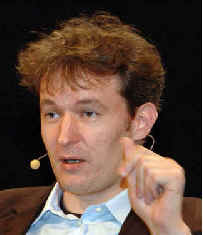|



DONAUSCHWABEN
ISSUES ARTICLE
SEPTEMBER
2009

Delivered
to the Victors
An
exhibition about the fate of the Danube Swabians
illustrates
incredible events in Serbia
Frankfurter
Allgemeine – Zeitung für Deutschland
You
may read a PDF form of this article,
either
in English or in German,
by
"clicking" on either image.
 |
 |
|
Michael Martens
(Click
on picture for PDF) |
Michael Martens
(Klick
Bild für PDF) |
Translation
from German into English – E. Gruenwald / Edited by – Susanne Paulus
NOVI
SAD, May 17th, 2009

For Herbert Rech, it was an encounter with the homeland of his
ancestors. The Interior Minister of Baden-Württemberg, who also serves
as his state's representative for expellees, refugees and emigrants, is
a descendant of a family with Danube Swabian roots, though he was born
after the war. Therefore, his statement at the opening of the exhibition
"Daheim an der Donau - Zusammenleben von Deutschen und Serben in
der Vojvodina" ("At home on the Danube - living together of
Germans and Serbs in the Vojvodina), that the trip to Novi Sad was a
deeply personal matter for him, sounded in no way like just a polite
phrase addressed to the host - particularly as Mr. Rech is also chairman
of the Foundation Advisory Board of the "Donauschwäbisches
Zentralmuseum" (Danube Swabian Central Museum) in Ulm, Germany. It
was there that the exhibition opened over the weekend was prepared, in
collaboration with the Museum of the Vojvodina in Novi Sad. Until middle
of August it will be shown there, in the capital of the Vojvodina, one
of the two formerly autonomous provinces of Serbia (the other being
Kosovo).
This exhibition is something special and new for the Serbs, as well. It
is the first time for their general public to see how the lives of the
Germans in the Vojvodina ended in 1944/1945: with escape, dispossession,
expulsion and mass murder. Their demise was not explained in Serbia
until now. It could not be talked about in Tito's Yugoslavia, and it was
hardly different after the European change in 1989. The crimes of Tito
and his partisans were discussed in public for the first time under
Milosevic; however, it presented an incomplete and distorted picture. In
addition, the "Yugoslavian
Disintegration Wars" caused so many new taboos, that the
pronouncement attributed to Churchill, that "the Balkans produced
more history than they could digest", was still valid.
So the exhibition in Novi Sad is more than a collection of soup plates,
cups, and costumes: it sheds light on a blind spot in the Serbian
awareness of history. A spot, though, that is little known in Germany as
well. Although the exhibition is not restricted to this bloody end only,
that end represents its core. The renowned Serbian historian, Dr.Zoran
Janjetovic, writes in the exhibition catalog,"The part of the
German population that stayed in the Vojvodina after the invasion of the
Red Army and the Partisan Units was in the first weeks subjected to mass
shootings, arrests, mistreatmenst, looting, rapes, and forced labor.
Partisan fighters and a part of the civilian population resorted to mass
looting, mistreatment, and killing. There was no system to this
violence, except that any atrocities were allowed."
The Germans in the Vojvodina were indiscriminately (and in an entirely
organized way) hit by the victors’ revenge. The exhibition does not
conceal, however, that many had earlier been "exploited, or allowed
themselves to be exploited, by National Socialism", as pointed out
by the German historian Holm Sundhaussen. Of course there had been
enthusiasm for Hitler, and voluntary military enlistment, as well as
forced conscription to the SS. The catalog states,” whether such
evidence helps to legitimize the expulsion and dispossession of hundreds
of thousands of people - the reader may decide."
In any case, it was above all these mass crimes that brought together
the Danube Swabians like giant pincers. After all, the designation of
these Germans as "Danube Swabians" was coined only in the
twenties and had not been in use just a hundred years before. So also
the Vojvodina, as a part of Serbia, came into existence only as a
consequence of World War I, made up of three historical regions: East
Syrmia (which the Serbs call Srem), the Batschka, and the West Banat.
The eastern part of the Banat was annexed by Romania after 1918. Just a
little corner remained with Hungary. A small part also of the Batschka
remained with Budapest; the larger one was allocated to the later
Yugoslavia (with Serbia included). Syrmia was divided again after World
War II: the larger eastern part was annexed by Serbia, the smaller one,
with Vukovar as its capital, by Croatia. Altogether, in and after World
War II, more than 50,000 Germans lost their lives violently in the
Vojvodina, which today has about two million inhabitants, about as large
as Hessen.. Up to 12,000 were deported to the Soviet Union. Under
direction of the new regime, death camps were erected in many places in
the Vojvodina. In order to get rid of the remaining Germans, from 1947
onwards Belgrade encouraged escape by relocating the camps closer to the
Yugoslavia-Hungarian border. The remaining Germans left the country in
the fifties and sixties. Though in 1921 more than 330,000 inhabitants
considered German their native tongue, today only about 3,000 do so. The
descendants of the others who had left come back from time to time to
the home towns of their parents or of their childhood as organized group
travelers. On the other hand, Zoran Janjetovic and other Serbian
historians concerned about objectivity oppose the assertion that the
suffering of the Germans in the Vojvodina was genocide. It was rather
"just" a crime, they claim, for which a half-century later
(and not far away from the Vojvodina) the term "Ethnic Cleansing
“was coined. Such definitions are open to argument. Though the fact
that this subject is now being discussed in Serbia is progress in
itself. From September 2009 until January 2010 the exhibition "At
home on the Danube" will be shown in the Danube Swabian Central
Museum in Ulm, Germany, and afterwards at the consulate of Baden-Württemberg
in Brussels, Belgium.


|